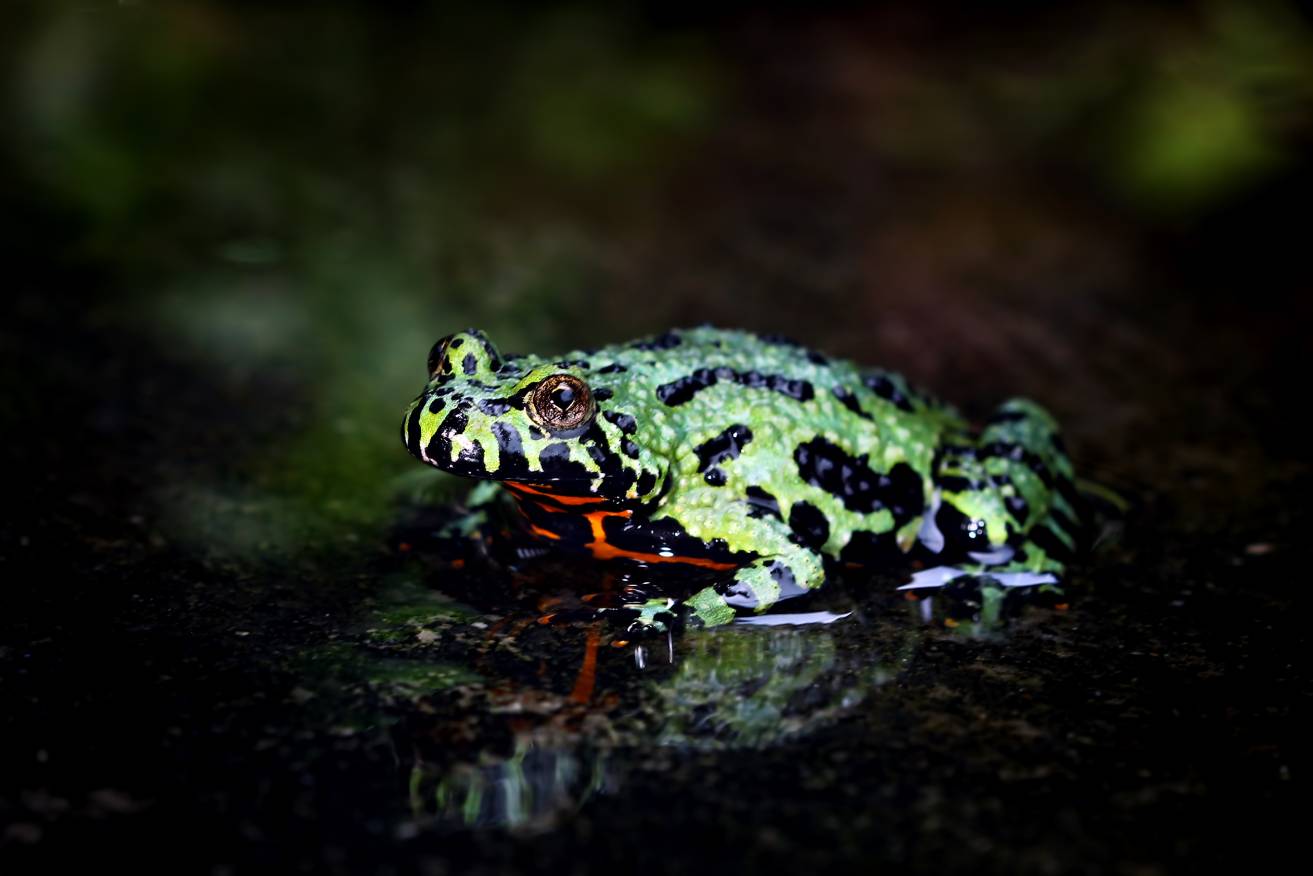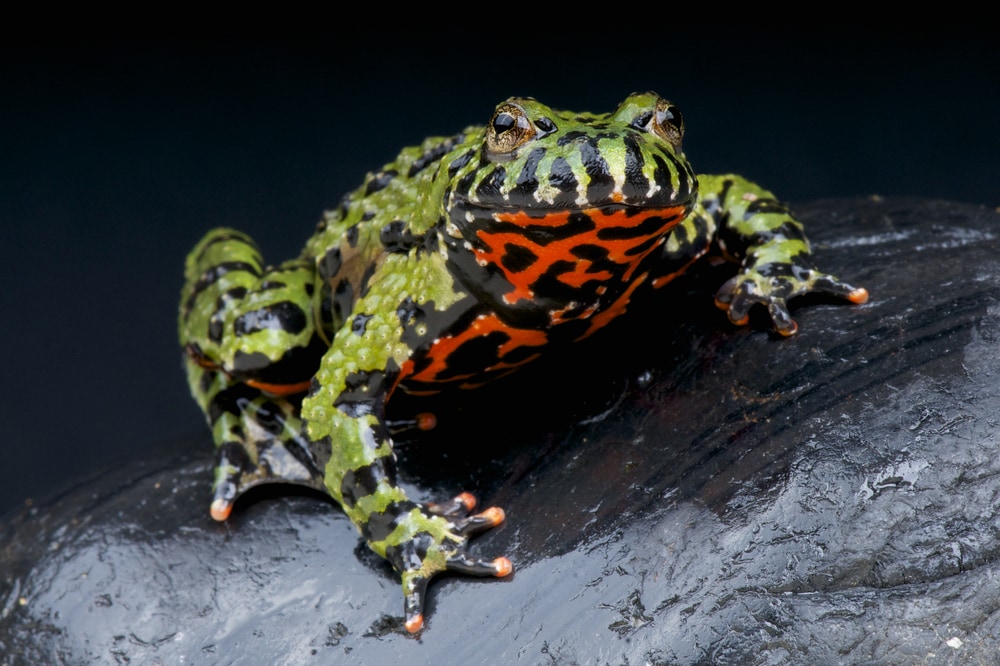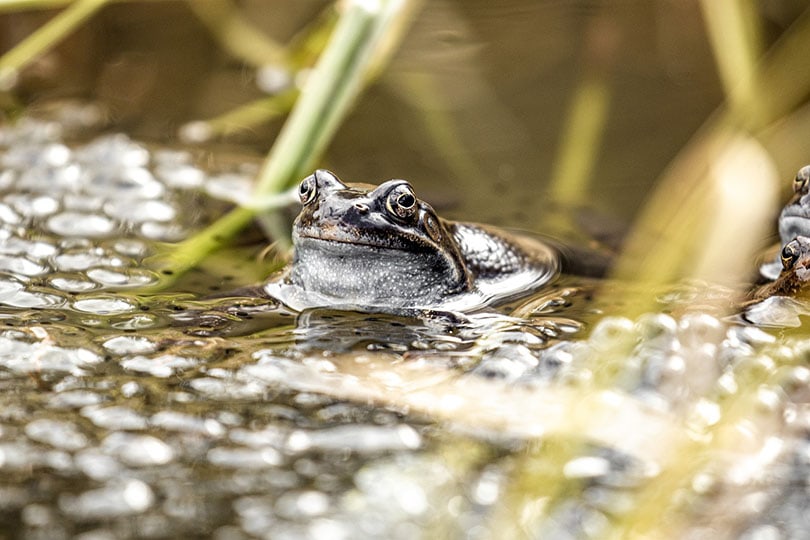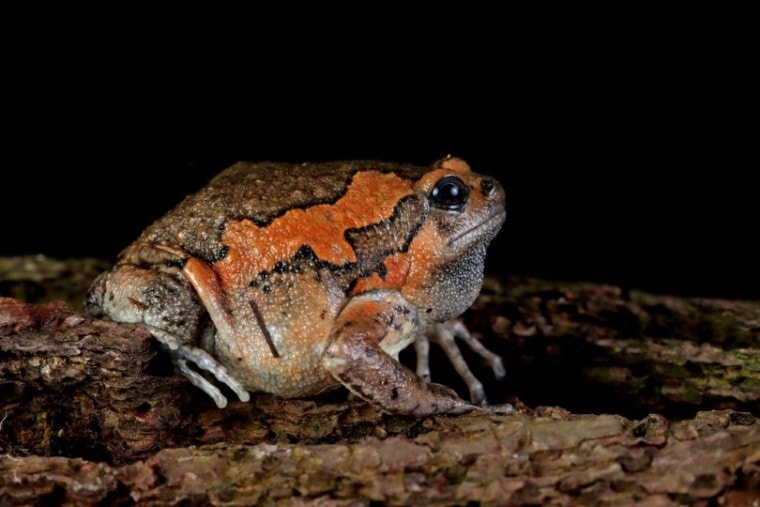
The Asian Painted Frog, or “Chubby Frog,” as its affectionately known, is a narrow-mouthed toad that originated in Southeast Asia, where the species is widespread. The species is so hardy and adaptable that their populations are growing despite the widespread collection of wild specimens for both food and pet markets. They have even been introduced to other parts of the world, where their populations have grown significantly enough to cause environmental problems, particularly in areas like Florida.
This hardiness and adaptability are precisely what makes the Chubby Frog such a great pet, though, as they adapt to captivity easily and quickly, even when conditions are not perfectly suitable. If you’d like to find out more about this adorable amphibian, read on for an in-depth look!
Quick Facts About the Asian Painted Frog
| Species Name: | Kaloula pulchra |
| Family: | Microhylid frogs |
| Care Level: | Easy |
| Temperature: | 68°F – 78°F |
| Temperament: | Easy-going, friendly, hardy |
| Color Form: | Brown body with distinctive stripes |
| Lifespan: | 10+ years |
| Size: | 2 – 3 inches long |
| Diet: | Crickets, worms, and other insects |
| Minimum Tank Size: | 15 gallons |
| Tank Set-Up: | Moist substrate, hides, and live plants |
| Compatibility: | Hardy and great for beginners |
Asian Painted Frog Overview
Although the Chubby Frog is popular in the pet trade, relatively little is known about its behavior in the wild. The species is native throughout Southeast Asia, including India and Malaysia, typically residing on leafy forest floors and rice fields. They have the ability to expand themselves when they feel threatened and will exude a non-toxic yet foul-tasting sticky mucus to protect themselves against predators.
These frogs have voracious appetites and are slow-moving, earning them the nicknames “Chubby Frog” and “Bubble Frog,” further accented by their short snouts and short limbs. They are typically inactive during the day and settle under dead leaves and are far more active at night when they feed. They have even been seen climbing trees.

How Much Do Asian Painted Frogs Cost?
Chubby Frogs are not easily bred in captivity, and as such, very few are. Most frogs in pet stores are wild-caught because there is such an abundance, and they are usually fairly low priced. If you’re looking to purchase an Asian Painted Frog from a pet store, you can expect to pay around $12-$30.
Typical Behavior & Temperament
Chubby Frogs are nocturnal, meaning they are only active at night. They are generally docile and laidback animals, and although they may mistake your finger for a worm and attempt to take a bite, they are mostly harmless. It’s important to handle them carefully and gently, though, as they will puff up and secrete nasty mucus when they feel threatened. Although it is not poisonous, it is certainly not pleasant. They are adaptable animals that take well to captivity, and their docile nature and low requirements make them easy and laidback pets to care for.
Appearance & Varieties
As their nickname suggests, these frogs are round in shape with short legs and a short, rounded snout. The painted part of their name is also appropriate, as they have two beautiful creamy-yellow stripes with black borders that run vertically down their backs and contrast with the darker base color of mottled brown. They typically have grey underbellies, although this is often darker in males.
There are three recognized subspecies of the Asian Painted Frog, and the jury is still out on whether these should be treated as their own unique species or continue to be regarded simply as a subspecies.

How to Take Care of Asian Painted Frogs
Chubby Frogs are easy to house and have few particular requirements to live happy and healthy lives. They do not require much space, and their needs can be met easily and affordably. Luckily, they do not require any special lighting, but you should maintain a normal day/night cycle for them.
Tank
A 15-gallon tank is a perfect size for a Chubby Frog, and a general rule of thumb is 20 inches long by 10 inches wide and at least 10 inches high. The higher, the better, though, as these frogs are surprisingly good climbers. There should be a tightly fitted mesh screen on top to avoid escape if you include small plants for them to climb.
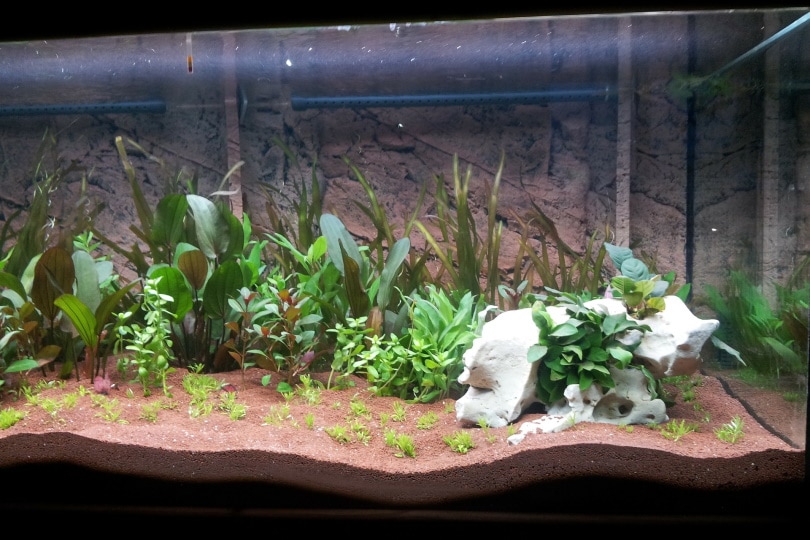
Substrate
The short, squat legs of these frogs are not ideal for jumping but are great for digging, and your Chubby will need a moist substrate that they can easily burrow into. Chemical-free soil or coconut fiber is best, but avoid vermiculite, gravel, stones, or small wood chips because these can easily be swallowed while feeding and cause potential health issues. Moistened paper towels can make a great temporary substrate if you need a temporary enclosure for moving your frog or during quarantine.
Temperature and Humidity
These hardy frogs can tolerate a wide range of temperatures, although you should aim to cool their tank down a bit at night. Anywhere in the range of 68-78 degrees Fahrenheit is fine, and even occasional fluctuations outside of these margins shouldn’t cause many problems for them. Humidity should be kept at around 70%, and this should stay relatively constant with the moist substrate, but occasional misting will help if needed, especially if you are using a mesh screen cover.
Hides
You’ll need to furnish your frog’s tank with a few hiding spots. Driftwood, rocks, and plants are all ideal, but live plants can sometimes be difficult because Chubby Frogs may dig them up when burrowing. You’ll also need to provide them with a ceramic dish of water at all times, one large enough for them to soak in. Make sure the water is fresh and free from chlorine or heavy metals, and replace it every couple of days.
Do Asian Painted Frogs Get Along With Other Pets?
In general, these docile frogs can be housed together with other frogs of the same species, but they will eat smaller frogs of different species when given the chance. They are peaceful with other frogs of the same species and rarely aggressive, but they do not need to live in groups and are happy to live alone. Of course, you should always keep them away from other pets like cats and dogs in your home.

What to Feed Your Asian Painted Frog
Chubby Frogs have a substantial appetite and eat a large variety of commercially available insects, including crickets, mealworms, silkworms, and wax worms. While crickets should be their main diet, try to vary their diet and include two to three other insects every few days. Adult frogs should be fed two to three times a week, while juveniles can be fed more frequently. It’s a good idea to supplement their meals with vitamins and minerals that can be dusted onto their food, especially for juveniles.
Keeping Your Asian Painted Frog Healthy
Chubby Frogs can live for 10 years and beyond, with some reaching up to 20 years old in captivity, so they are hardy, long-lived animals in general. Like most amphibians, you should handle them as little as possible to avoid damaging their skin. Wash your hands thoroughly before and after handling. Even without the proper husbandry conditions, these highly adaptable animals do well, so if they have the correct environment and nutritional requirements and are handled as little as possible, they suffer from few health issues.
Breeding
In the wild, Chubby Frogs breed prolifically and rapidly, so it makes far more sense to obtain them from the wild. With captive breeding, you’ll need to mimic the rainy conditions that they usually breed in and lower the temperature to induce brumation. This is a time-consuming and complicated process, and breeding in captivity is recommended only for experts in the field. Although it won’t cost much to set up breeding facilities, it will not make you much money either, so it is only worth doing for the enjoyment.
Are Asian Painted Frogs Suitable for You?
As one of the easiest and most hardy amphibians to care for, the Asian Painted Frog is an ideal choice for beginners. They are fascinating to watch and don’t mind being (carefully) handled, and they have low housing requirements. Also, they are inexpensive to purchase and home, so they are low-cost pets and easy to look after.
If you are looking to get into the fascinating world of keeping amphibians and reptiles, the Asian Painted Frog is a great point of entry.
Also see:
- Tomato Frog: Care Sheet, Lifespan & More (with Pictures)
- White Lipped Tree Frog: Care Sheet, Lifespan & More (with Pictures)
Featured Image Credit: Kurit afshen, Shutterstock



